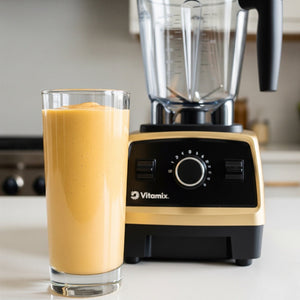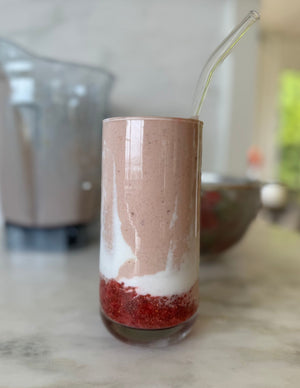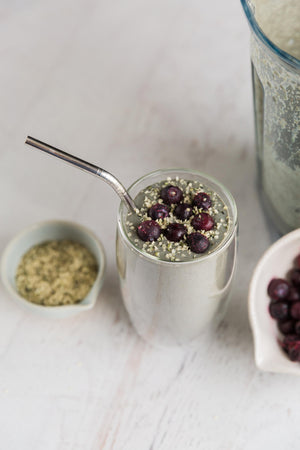If you’re looking to understand some of the benefits of 15 essential vitamins and minerals for children or you have specific questions related to Hiya’s children’s multi-vitamin, this is the article for you. I wanted to spend a little more time explaining what / how much of the carefully chosen vitamins and minerals are in this product and why it’s my #1 choice for my boys.
I cover so much more detail re: these nutrients, including how to get these nutrients through whole foods, in my video course, Fab 4 Under 4 course, so go check it out! Hiya is simple - made with 12 fruits and veggies and 15 essential vitamins and minerals - blended together in a tasty chewable that fills in the gaps for nutrients when, say we didn’t eat our beef liver and leafy greens that day. ;);)
As an investor and partner, I’m delighted by their transparency. Code KELLY for 50% off your first order!
Let’s take a look:
- Zinc (3 mg, equivalent to ~6oz dark meat chicken ) is critical for immune function as well as cell growth and DNA synthesis
Zinc whole foods: oysters, crab, bone broth, red meat, chicken beans, nuts
- Vitamin A (360 mcg, equivalent to ~5 egg yolks) The whole food form of Vitamin A needs to be converted into the active form. For instance, to get the equivalent of 1 mcg of preformed Vitamin A, you need to ingest 12 mcg of beta-carotene, 24 mcg of alphacarotene or 24 mcg of beta-cryptoxanthin. What a great vitamin to supplement!
A whole foods: leafy greens and orange plant-based foods like sweet potatoes and carrots
- Folate, B9 (200 mcg, equivalent ~3oz beef liver) Hiya’s mutli uses the natural form of Folate, 5-methyltetrahydrofolic (5-MTHF). Due to genetic variations in MTHFR, more than 1/3 of people cannot carry out that extra step of converting folic acid to folate (the active usable form), meaning folic acid is unusable and potentially harmful. I recommend always avoiding folic acid and opting for the active form of B9 called MTHF or methyl-tetrahydrofolic acid when supplementing.
Folate whole foods: beef liver, broccoli, brussel sprouts, avocado, spinach. Think “folate is in foliage.”
- Vitamin C (40 mg, equivalent to ~½ cup of kale -jackpot!) supports immunity and collagen production as well as functions like an antioxidant.
C whole foods: guava, bell pepper, kale, oranges, kiwi, broccoli, strawberries, brussel sprouts, papaya, tomatoes, snow peas
- Iodine (50 mcg, equivalent to ~½ cup greek yogurt) is a trace mineral and an essential component of the thyroid hormones thyroxine (T4) and triiodothyronine (T3). It supports our thyroid, which in turn supports healthy development.
Iodine whole foods: seaweed snacks, kelp flakes, dairy, eggs, seafood like cod and shrimp
- Vitamin D (25 mcg, 1,000iu, equivalent to ~5oz salmon) ~50% of 6-12 year old children are Vitamin D-deficient. There’s also a seasonal component here as winter and spring showed more deficiency than autumn and summer. It assists in calcium absorption, supports the mental health of children and adolescents and studies suggest oral vitamin D improved ADHD symptoms.
D whole foods: Get outside(!) 5-30 mins a day and eat fish 2x / week
- Biotin, B7 (25 mcg, equivalent to ~2.5 eggs) supports critical body functions and ensures that development properly follows the instructions coded by DNA maintaining genetic integrity
B7 whole foods: organ meats, eggs, fish, meat seeds, nuts, certain vegetables such as sweet potatoes, salmon, pork chop, sunflower seeds, almonds
- Calcium (20 mcg, equivalent to ~½ cup of broccoli) is the most abundant mineral in the body and tightly regulated. There’s “just a touch” of this in the Hiya vitamin in order to support bones and development*.
Calcium whole foods: dairy, seeds, nuts, fish bones-yep if you eat salmon or sardines with the bones, leafy greens
- Selenium (15 mcg, equivalent ~1 large egg) Selenium is an essential mineral that little bodies can’t make on their own.
Selenium whole foods: seafood, Brasil nuts
- Vitamin E (3.5 mcg, equivalent to ~1 avocado) is more of an antioxidant to fight inflammation.
E whole foods: avocado, nuts, seeds, and green leafy vegetables
- Pantotethic Acid, B5 (2.5 mg) Vitamin B5 has been shown to support energy, sleep, and focus.*
B5 whole foods: Plants
- Vitamin B12 (2 mcg, equivalent to ~3oz ground beef) While cyanocobalamin is more common, Hiya uses methylcobalamin -- the naturally-occurring form easiest on kids and good for parents looking for peace of mind. I note in my Fab 4 Under 4 course, that brain and nerve function is critical in methylation, function of the central nervous system, healthy red blood cell formation, and DNA synthesis and is supported by B12.
B12 whole foods: Organ meat, clams, tuna, salmon, beef, eggs, nutritional yeast, and dairy products like full fat fermented greek yogurt, cottage cheese and sour cream or hard aged cheese
- Manganese (1.5 mcg) has been shown to provide support for inflammation and metabolism.*
Manganese whole foods: chickpeas, potatoes
- Riboflavin (0.6 mcg) has been shown to support eyesight, energy, and cell growth.*
Riboflavin whole foods: spinach, bananas, asparagus
- Thiamin, B1 (0.5 mcg) Vitamin B1 has been shown to support concentration, sleep, and general mood.*
Thiamin whole foods: seaweed, grains, legumes
Hiya contains no added sugars, compared to typical 3-5g per serving in other multivitamins. I do recommend in my Fab 4 Under 4 course, in line with AHA, that children under 2 have no added sugar in their diets. I love giving the occasional treat to my almost 4 year old son, Bash. Why waste some of that treat on a vitamin when I can give him naturally sweetened vitamins (w/ fruit) that taste just as YUMMY!? Hiya also contains no dyes, but rather uses red from beetroot and green from spirulina.
Just by taking the time to read this, you are doing the right thing looking out for your child’s behavioral and developmental health. In an attempt to create awareness and not fear, be mindful of glucose syrup, sugar, gelatin, preservatives (such as magnesium stearate, silicon/titanium dioxide), artificial dyes, and folic acid. Synthetic folic acid can remain in your body for a long time and is found in many fortified foods such as cereal and pasta.
Hope this provides you with optimism and peace of mind in introducing nutrient-density in your child’s diet when they say no to beef liver. Lol
XO, Kelly
*These statements have not been evaluated by the Food and Drug Administration.
This product is not intended to diagnose, treat, cure or prevent any disease.








